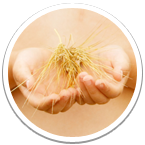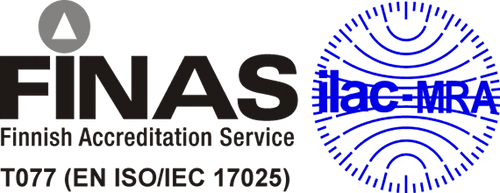Dioxins and PCBs
The laboratory provides analytical services on a routine basis and accepts individual samples as well as samples from larger research projects. Written requests and contacts:
Environmental pollutant analysis
See also Pollutants from small serum volume:
Pollutants from small serum volume (micro POP)
Accreditation
- The method is accredited with a flexible scope for all matrices and analytes listed below
Number of samples
- Also for single samples
Matrices
- Serum, breast milk, placenta and other human samples
- Fish and other animal samples
- Food and feed
- Soil, sediment and other environmental samples suitable for routine analysis
- Water
- Other samples containing fat or oil
Method description
- After matrix-specific pretreatment, analytes are extracted and the extract is cleaned with a silica and aluminium oxide column. The analytes are separated with an active carbon column. The quantification is performed with a gas chromatograph coupled to a triple quadrupole mass spectrometer (GC-MS/MS).
Limit of quantification
- Depends on the sample amount and matrix
- For example PCDDs, PCDFs and non-ortho-PCBs from tissues: 0.1–5.0 pg/g fat
- For example other PCBs in tissues: 10–100 pg/g fat
Sampling instructions
- Sample container: glass, polyethene (PE) or aluminium foil
- Minimum sample amount: liquids 1000 ml, serum and breast milk 100 ml, soil and sediment 50 g, food and feed 1000 g (EU N:o 252/2012), fat 10 g
- Maximum storage time (water, soil and sediment): +7°C for 7 days, -18°C for at least 20 years, -70°C or in liquid nitrogen indefinitely
- Maximum storage time (other samples): +7°C for 3 days, -18°C for at least 20 years, -70°C or in liquid nitrogen indefinitely
- See also the general sampling instructions that apply to all analyses:
Environmental pollutant analysis
Dispatch
- Frozen in cold package
Analytes
Polychlorinated dibenzo-p-dioxins (PCDDs)
- 2,3,7,8-TCDD
- 1,2,3,7,8-PeCDD
- 1,2,3,4,7,8-HxCDD
- 1,2,3,6,7,8-HxCDD
- 1,2,3,7,8,9-HxCDD
- 1,2,3,4,6,7,8-HpCDD
- OCDD
Polychlorinated dibenzofurans (PCDFs)
- 2,3,7,8-TCDF
- 1,2,3,7,8-PeCDF
- 2,3,4,7,8-PeCDF
- 1,2,3,4,7,8-HxCDF
- 1,2,3,6,7,8-HxCDF
- 1,2,3,7,8,9-HxCDF
- 2,3,4,6,7,8-HxCDF
- 1,2,3,4,6,7,8-HpCDF
- 1,2,3,4,7,8,9-HpCDF
- OCDF
Non-ortho polychlorinated biphenyls (Non-ortho-PCBs)
- PCB 77
- PCB 81
- PCB 126
- PCB 169
Other polychlorinated biphenyls (Other PCBs)
- PCB 18
- PCB 28
- PCB 33
- PCB 47
- PCB 49
- PCB 52
- PCB 66
- PCB 74
- PCB 99
- PCB 101
- PCB 105
- PCB 110
- PCB 114
- PCB 118
- PCB 123
- PCB 128
- PCB 138
- PCB 141
- PCB 153
- PCB 156
- PCB 157
- PCB 167
- PCB 170
- PCB 180
- PCB 183
- PCB 187
- PCB 189
- PCB 194
- PCB 206
- PCB 209
The unit is a FINAS accredited testing laboratory T077. It has been accredited according to the standard SFS-EN ISO/IEC 17025:2005 and its scope of accreditation is available on the website of FINAS (Finnish Accreditation Service).
The work order must be included in the shipment of samples along with an itemized sample list, if needed.
Work order for environmental pollutant analyses (PDF 132 KB)





